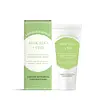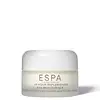What's inside
What's inside
 Key Ingredients
Key Ingredients

 Benefits
Benefits

 Concerns
Concerns

 Ingredients Side-by-side
Ingredients Side-by-side

Water
Skin ConditioningAloe Barbadensis Leaf Juice
Skin ConditioningGlycerin
HumectantCoco-Caprylate/Caprate
EmollientCaprylic/Capric Triglyceride
MaskingIsoamyl Cocoate
Polyglyceryl-3 Dicitrate/Stearate
EmulsifyingCetearyl Alcohol
EmollientPersea Gratissima Oil
Skin ConditioningOrbignya Oleifera Seed Oil
EmollientCeramide NP
Skin ConditioningPrunus Amygdalus Dulcis Oil
Skin ConditioningXanthan Gum
EmulsifyingPhenoxyethanol
PreservativeEthylhexylglycerin
Skin ConditioningCI 42090
Cosmetic ColorantCI 19140
Cosmetic ColorantParfum
MaskingCitral
PerfumingCitronellol
PerfumingLimonene
PerfumingLinalool
PerfumingWater, Aloe Barbadensis Leaf Juice, Glycerin, Coco-Caprylate/Caprate, Caprylic/Capric Triglyceride, Isoamyl Cocoate, Polyglyceryl-3 Dicitrate/Stearate, Cetearyl Alcohol, Persea Gratissima Oil, Orbignya Oleifera Seed Oil, Ceramide NP, Prunus Amygdalus Dulcis Oil, Xanthan Gum, Phenoxyethanol, Ethylhexylglycerin, CI 42090, CI 19140, Parfum, Citral, Citronellol, Limonene, Linalool
Water
Skin ConditioningGlycerin
HumectantCaprylic/Capric Triglyceride
MaskingIsopropyl Palmitate
EmollientCetearyl Alcohol
EmollientGlyceryl Stearate
EmollientPolysorbate 60
EmulsifyingSorbitol
HumectantPrunus Amygdalus Dulcis Oil
Skin ConditioningSodium PCA
HumectantPhenoxyethanol
PreservativeBorago Officinalis Seed Oil
EmollientGlycine Soja Oil
EmollientSimmondsia Chinensis Seed Oil
EmollientXanthan Gum
EmulsifyingOlea Europaea Fruit Oil
MaskingCentaurea Cyanus Flower Extract
AstringentTocopherol
AntioxidantHydrogenated Vegetable Oil
EmollientOenothera Biennis Oil
EmollientCentella Asiatica Leaf Extract
Skin ConditioningMacadamia Ternifolia Seed Oil
EmollientPrunus Persica Kernel Oil
EmollientBenzoic Acid
MaskingGlyceryl Polyacrylate
Helianthus Annuus Seed Oil
EmollientSodium Lactate
BufferingDehydroacetic Acid
PreservativeAniba Rosaeodora Wood Oil
AstringentPelargonium Graveolens Oil
MaskingLinalool
PerfumingCaprylyl Glycol
EmollientSorbitan Stearate
EmulsifyingEthylhexylglycerin
Skin ConditioningGinkgo Biloba Leaf Extract
Skin ConditioningParfum
MaskingSodium Hydroxide
BufferingBoswellia Carterii Gum Oil
PerfumingCitrus Aurantium Amara Flower Oil
MaskingSalvia Sclarea Oil
MaskingSantalum Album Oil
MaskingBenzyl Alcohol
PerfumingGeraniol
PerfumingAnthemis Nobilis Flower Oil
MaskingPotassium Sorbate
PreservativeLimonene
PerfumingStyrax Tonkinensis Resin Extract
PerfumingMaltodextrin
AbsorbentChlorophyllin-Copper Complex
AntioxidantWater, Glycerin, Caprylic/Capric Triglyceride, Isopropyl Palmitate, Cetearyl Alcohol, Glyceryl Stearate, Polysorbate 60, Sorbitol, Prunus Amygdalus Dulcis Oil, Sodium PCA, Phenoxyethanol, Borago Officinalis Seed Oil, Glycine Soja Oil, Simmondsia Chinensis Seed Oil, Xanthan Gum, Olea Europaea Fruit Oil, Centaurea Cyanus Flower Extract, Tocopherol, Hydrogenated Vegetable Oil, Oenothera Biennis Oil, Centella Asiatica Leaf Extract, Macadamia Ternifolia Seed Oil, Prunus Persica Kernel Oil, Benzoic Acid, Glyceryl Polyacrylate, Helianthus Annuus Seed Oil, Sodium Lactate, Dehydroacetic Acid, Aniba Rosaeodora Wood Oil, Pelargonium Graveolens Oil, Linalool, Caprylyl Glycol, Sorbitan Stearate, Ethylhexylglycerin, Ginkgo Biloba Leaf Extract, Parfum, Sodium Hydroxide, Boswellia Carterii Gum Oil, Citrus Aurantium Amara Flower Oil, Salvia Sclarea Oil, Santalum Album Oil, Benzyl Alcohol, Geraniol, Anthemis Nobilis Flower Oil, Potassium Sorbate, Limonene, Styrax Tonkinensis Resin Extract, Maltodextrin, Chlorophyllin-Copper Complex
Ingredients Explained
These ingredients are found in both products.
Ingredients higher up in an ingredient list are typically present in a larger amount.
This ingredient is an emollient, solvent, and texture enhancer. It is considered a skin-softener by helping the skin prevent moisture loss.
It helps thicken a product's formula and makes it easier to spread by dissolving clumping compounds.
Caprylic Triglyceride is made by combining glycerin with coconut oil, forming a clear liquid.
While there is an assumption Caprylic Triglyceride can clog pores due to it being derived from coconut oil, there is no research supporting this.
Learn more about Caprylic/Capric TriglycerideCetearyl alcohol is a mixture of two fatty alcohols: cetyl alcohol and stearyl alcohol. It is mainly used as an emulsifier. Emulsifiers help prevent the separation of oils and products. Due to its composition, it can also be used to thicken a product or help create foam.
Cetearyl alcohol is an emollient. Emollients help soothe and hydrate the skin by trapping moisture.
Studies show Cetearyl alcohol is non-toxic and non-irritating. The FDA allows products labeled "alcohol-free" to have fatty alcohols.
This ingredient is usually derived from plant oils such as palm, vegetable, or coconut oils. There is debate on whether this ingredient will cause acne.
Due to the fatty acid base, this ingredient may not be Malassezia folliculitis safe.
Learn more about Cetearyl AlcoholEthylhexylglycerin (we can't pronounce this either) is commonly used as a preservative and skin softener. It is derived from glyceryl.
You might see Ethylhexylglycerin often paired with other preservatives such as phenoxyethanol. Ethylhexylglycerin has been found to increase the effectiveness of these other preservatives.
Glycerin is already naturally found in your skin. It helps moisturize and protect your skin.
A study from 2016 found glycerin to be more effective as a humectant than AHAs and hyaluronic acid.
As a humectant, it helps the skin stay hydrated by pulling moisture to your skin. The low molecular weight of glycerin allows it to pull moisture into the deeper layers of your skin.
Hydrated skin improves your skin barrier; Your skin barrier helps protect against irritants and bacteria.
Glycerin has also been found to have antimicrobial and antiviral properties. Due to these properties, glycerin is often used in wound and burn treatments.
In cosmetics, glycerin is usually derived from plants such as soybean or palm. However, it can also be sourced from animals, such as tallow or animal fat.
This ingredient is organic, colorless, odorless, and non-toxic.
Glycerin is the name for this ingredient in American English. British English uses Glycerol/Glycerine.
Learn more about GlycerinLimonene is a fragrance that adds scent and taste to a formulation.
It's found in the peel oil of citrus fruits and other plants such as lavender and eucalyptus. The scent of limonene is generally described as "sweet citrus".
Limonene acts as an antioxidant, meaning it helps neutralize free radicals.
When exposed to air, oxidized limonene may sensitize the skin. Because of this, limonene is often avoided by people with sensitive skin.
The term 'fragrance' is not regulated in many countries. In many cases, it is up to the brand to define this term. For instance, many brands choose to label themselves as "fragrance-free" because they are not using synthetic fragrances. However, their products may still contain ingredients such as essential oils that are considered a fragrance.
Learn more about LimoneneLinalool is a fragrance and helps add scent to products. It's derived from common plants such as cinnamon, mint, citrus, and lavender.
Like Limonene, this ingredient oxidizes when exposed to air. Oxidized linalool can cause allergies and skin sensitivity.
This ingredient has a scent that is floral, spicy tropical, and citrus-like.
Learn more about LinaloolParfum is a catch-all term for an ingredient or more that is used to give a scent to products.
Also called "fragrance", this ingredient can be a blend of hundreds of chemicals or plant oils. This means every product with "fragrance" or "parfum" in the ingredients list is a different mixture.
For instance, Habanolide is a proprietary trade name for a specific aroma chemical. When used as a fragrance ingredient in cosmetics, most aroma chemicals fall under the broad labeling category of “FRAGRANCE” or “PARFUM” according to EU and US regulations.
The term 'parfum' or 'fragrance' is not regulated in many countries. In many cases, it is up to the brand to define this term.
For instance, many brands choose to label themselves as "fragrance-free" because they are not using synthetic fragrances. However, their products may still contain ingredients such as essential oils that are considered a fragrance by INCI standards.
One example is Calendula flower extract. Calendula is an essential oil that still imparts a scent or 'fragrance'.
Depending on the blend, the ingredients in the mixture can cause allergies and sensitivities on the skin. Some ingredients that are known EU allergens include linalool and citronellol.
Parfum can also be used to mask or cover an unpleasant scent.
The bottom line is: not all fragrances/parfum/ingredients are created equally. If you are worried about fragrances, we recommend taking a closer look at an ingredient. And of course, we always recommend speaking with a professional.
Learn more about ParfumPhenoxyethanol is a preservative that has germicide, antimicrobial, and aromatic properties. Studies show that phenoxyethanol can prevent microbial growth. By itself, it has a scent that is similar to that of a rose.
It's often used in formulations along with Caprylyl Glycol to preserve the shelf life of products.
Prunus Amygdalus Dulcis Oil comes from the sweet almond, a tree native to Iran. This oil has no fragrance and is non-volatile.
Almonds contain healthy fats, vitamins, and minerals. It is a rich source of Vitamin E, a great antioxidant and skin conditioning ingredient. Sweet almond oil contains fatty acids such as linolenic acid and triglycerides.
The content of sweet almond oil makes it a great emollient; it can help soften and hydrate your skin. Emollients create a barrier over your skin to trap moisture in. Sweet almond oil has antioxidant properties.
Those with an almond allergy should be careful of this ingredient and speak with a professional about using it in your skincare.
This ingredient may not be fungal-acne safe.
Learn more about Prunus Amygdalus Dulcis OilWater. It's the most common cosmetic ingredient of all. You'll usually see it at the top of ingredient lists, meaning that it makes up the largest part of the product.
So why is it so popular? Water most often acts as a solvent - this means that it helps dissolve other ingredients into the formulation.
You'll also recognize water as that liquid we all need to stay alive. If you see this, drink a glass of water. Stay hydrated!
Learn more about WaterXanthan gum is used as a stabilizer and thickener within cosmetic products. It helps give products a sticky, thick feeling - preventing them from being too runny.
On the technical side of things, xanthan gum is a polysaccharide - a combination consisting of multiple sugar molecules bonded together.
Xanthan gum is a pretty common and great ingredient. It is a natural, non-toxic, non-irritating ingredient that is also commonly used in food products.
Learn more about Xanthan Gum